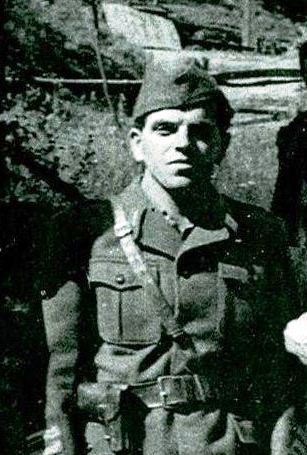
Franc Rozman, nom de guerre Stane or Stane Mlinar, was a Slovene Partisan commander in World War II.
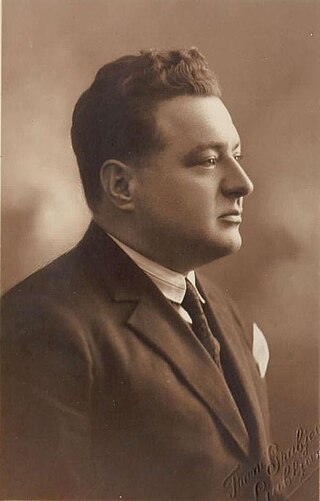
Igo Gruden was a Slovene poet and translator.

Leon Rupnik, also known as Lav Rupnik or Lev Rupnik was a Slovene general in the Kingdom of Yugoslavia who collaborated with the Fascist Italian and Nazi German occupation forces during World War II. Rupnik served as the President of the Provincial Government of the Nazi-occupied Province of Ljubljana from November 1943 to early May 1945. Between September 1944 and early May 1945, he also served as chief inspector of the Slovene Home Guard, a collaborationist militia, although he did not have any military command until the last month of the war.

Josip Murn, also known under the pseudonym Aleksandrov was a Slovene symbolist poet. Together with Ivan Cankar, Oton Župančič, and Dragotin Kette, he was regarded as one of the beginners of modernism in Slovene literature. After France Prešeren and Edvard Kocbek, Murn was probably the most influential Slovene poet of the last two centuries.

The Battle of Dražgoše was a Second World War battle between the Slovene Partisans and Nazi Germany armed forces, which took place between January 9 and January 11, 1942, in the village of Dražgoše in German-annexed Slovenia. This battle was the first direct confrontation between the two. It ended with brutal reprisals of German forces against the villagers and the destruction of the village.

Oton Župančič was a Slovene poet, translator, and playwright. He is regarded, alongside Ivan Cankar, Dragotin Kette and Josip Murn, as the beginner of modernism in Slovene literature. In the period following World War I, Župančič was frequently regarded as the greatest Slovenian poet after Prešeren, but in the last forty years his influence has been declining and his poetry has lost much of its initial appeal.

Borovnica is a settlement in the Municipality of Borovnica in the Inner Carniola region of Slovenia. It is about 20 kilometres (12 mi) southwest of the national capital Ljubljana.

The Slovene Home Guard, was a Slovene anti-Partisan collaborationist militia that operated during the 1943–1945 German occupation of the formerly Italian-occupied Slovene Province of Ljubljana. The Guard consisted of former Village Sentries, part of Italian-sponsored Anti-Communist Volunteer Militia, re-organized under Nazi command after the Italian Armistice of September 1943.

Gregorij Rožman was a Slovenian Roman Catholic prelate. Between 1930 and 1959, he served as bishop of the Diocese of Ljubljana. He may be best-remembered for his controversial role during World War II. Rožman was an ardent anti-communist and opposed the Liberation Front of the Slovene People and the Partisan forces because they were led by the Communist party. He established relations with both the fascist and Nazi occupying powers, issued proclamations of support for the occupying authorities, and supported armed collaborationist forces organized by the fascist and Nazi occupiers. The Yugoslav Communist government convicted him in absentia in August 1946 of treason for collaborating with the Nazis against the Yugoslav resistance. In 2009, his conviction was annulled on procedural grounds.
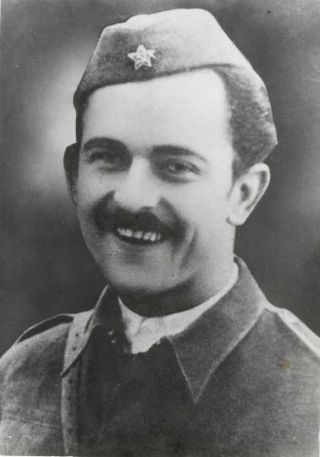
Karel Destovnik, pen name and nom de guerre Kajuh, was a Slovenian poet, translator, resistance fighter, and Yugoslav people's hero.

Ernest Peterlin was a Slovene military officer who rose to a senior position in the Royal Yugoslav Army prior to the Second World War. Married to Anja Roman Rezelj. A decided anti-Communist, during the war he became a prominent anti-Partisan military leader and one of the main exponents of the pro-Western faction of the Slovene Home Guard, an anti-Communist collaborationist militia active in parts of German-occupied Slovenia between 1943 and 1945. In 1945, he was tried and sentenced to death by the new Yugoslav Communist authorities and executed in 1946.

The Anti-Communist Volunteer Militia were paramilitary auxiliary formations of the Royal Italian Army composed of Yugoslav anti-Partisan groups in the Italian-annexed and occupied portions of the Kingdom of Yugoslavia during the Second World War.
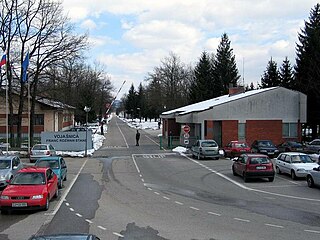
The Edvard Peperko Barracks, until July 2012 known as the Franc "Stane" Rozman Barracks, are barracks in Ljubljana, the capital of Slovenia. They are the home of the Slovenian Armed Forces. Before the Slovenia's independence, they belonged to the Yugoslav People's Army. They were built in 1975 at the site of the former Ljubljana airport.
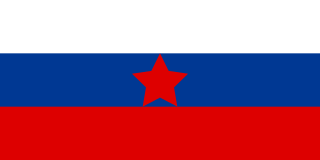
The Slovene Partisans, formally the National Liberation Army and Partisan Detachments of Slovenia, were part of Europe's most effective anti-Nazi resistance movement led by Yugoslav revolutionary communists during World War II, the Yugoslav Partisans. Since a quarter of Slovene ethnic territory and approximately 327,000 out of total population of 1.3 million Slovenes were subjected to forced Italianization since the end of the First World War, the objective of the movement was the establishment of the state of Slovenes that would include the majority of Slovenes within a socialist Yugoslav federation in the postwar period.

Janko Premrl was a Slovene Partisan.
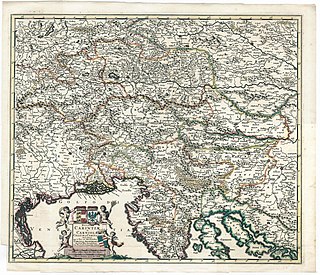
World War II in the Slovene Lands started in April 1941 and lasted until May 1945. The Slovene Lands were in a unique situation during World War II in Europe. In addition to being trisected, a fate that also befell Greece, Drava Banovina was the only region that experienced a further step — absorption and annexation into neighboring Nazi Germany, Fascist Italy, and Hungary. The Slovene-settled territory was divided largely between Nazi Germany and the Kingdom of Italy, with smaller territories occupied and annexed by Hungary and the Independent State of Croatia.
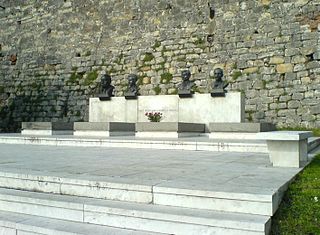
Tomb of People's Heroes in Belgrade is located underneath the walls of the Belgrade Fortress. It holds the remains of four recipients of the Order of the People's Hero of SFR Yugoslavia.
Ivan Maček, nom de guerre Matija, was a Yugoslav Communist politician from Slovenia who served as the President of the People's Assembly of SR Slovenia from 1963 to 1967.
The Battle of Grčarice was a battle fought in early September 1943 between the Slovene Partisans and the Blue Guard. The battle was waged in Grčarice in German-occupied Yugoslavia, modern-day Slovenia.

Franc Berneker was a 19th- and early-20th-century Slovene tomb sculptor, who had a strong impact on Slovenj Gradec gaining recognition for his work in bronze, marble and monuments. His art focus went from realism to modernism to psychology, drama and an exploration of the relationship between worked and unworked, smooth and rough. He studied with Edmund von Hellmer at the Vienna Academy of Fine Arts and Ivan Zajec on monuments of national heroes His art work is displayed at the Resau Art Nouveau Network.


















